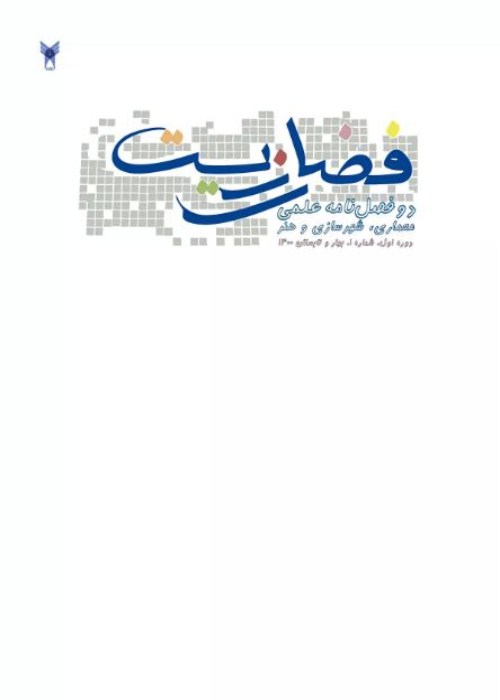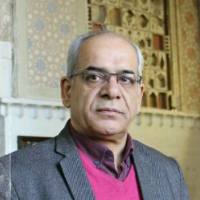Investigating the effective spaces on the mental image based on the comparative comparison of Pahlavi era houses and tall residential buildings in Urmia city
Author(s):
Article Type:
Research/Original Article (بدون رتبه معتبر)
Abstract:
Currently, the population increase in Iran leads to an increasing number of high-rise residential buildings. Many studies have been done regarding tall buildings, however, living in tall buildings makes the residents dissatisfied. Though numerous factors are effective in line with residents' satisfaction with living in high-rise buildings, their feelings and needs are focal points in this regard that can upsurge their satisfaction. Due to the fact that residents’ mental image of high-rise buildings is effective in their feelings in line with the environment, studies done in this regard aim to examine and study the mental image to increase the satisfaction of the residents. These dissatisfactions could be reduced via a perfect mental image in the residents’ minds. Physical and psychological factors are really significant in people’s mental image formation, and regarding this fact, in the present article, physical factors are considered. In terms of purpose, present research is fundamental; because it aims to recognize traditional houses and tall residential buildings and spaces that can be effective in creating mental images. Accordingly, traditional houses and high-rise residential buildings in Urmia are investigated and compared via the descriptive-analytical method, and their spaces are analyzed. In the next step, the present study identifies the spaces that are effective in the mental image of the residents of high-rise residential buildings using a quantitative approach and a questionnaire that is scored based on a Likert scale. A combination of library studies (theoretical) and field studies is used to collect the required research data and in this regard, a questionnaire-based survey with closed questions was used as the desired tool. In the present article, first, numerous traditional houses that belong to the first and second Pahlavi periods (Assadollahzadeh, Neshat, Rezqdeh, Teymurzadeh, and Shafipour houses) in Urmia were visited and observed. They have been compared with the high-rise residential buildings of Urmia (Elahiyeh, Golestan, Pezeshkan, Golshahr, and Valiasr buildings). It is evident that all traditional houses of Urmia city have basements and wooden roofs are seen in most of them. At the beginning of the first Pahlavi Era, the residential and service areas were separated by a large yard. Over time, the houses have been renovated and all the spaces have been assigned to one section. Instead, compared to the first Pahlavi period, the number of warehouses decreased in the second Pahlavi period. The building facade constructed with brick and different designs along with large vertical windows is one of the distinguishing features of these houses. To communicate with family members, inner windows and niches are seen in different places. The trunk is part of the main furniture of these houses. The survey of high-rise residential buildings in Urmia City discloses that every residential and service part are limited to one unit. Conversely, the yard and basement are removed or publicly available to everyone. The spaces connection is evident at low height and the houses are high. Likewise, most of the houses are smaller, and closely connected interior spaces can be seen in the house. The comparison of Pahlavi Era houses and high-rise residential buildings revealed that, over time, factors have been removed or even replaced in the high-rise residential buildings. In line with these changed items, one can mention the removal of the private courtyards, removal of the basement, removal of Iranian and traditional designs, shortening of windows, lack of different spaces such as the rooftop, removal of Iranian architecture, removal of traditional furniture, removal of native and natural materials and the connection of internal spaces using internal windows.Then, in three months, via random sampling method, the questionnaire was given to 384 residents of high-rise residential buildings. In the current study, the statistical population is all the residents of residential buildings above 8 floors, which is about 15,000 people regarding the statistics of Urmia City Housing and Urban Development Department. The sample population is obtained from Morgan's table as 375 people. A total of 297 residents filled out the questionnaire, of which 97 questionnaires were discarded due to incompleteness. Consequently, 200 questionnaires were analyzed. The questionnaire results revealed that large and all-around windows with less OKB independent yards, using local materials, availability of different spaces of the building, and brick façade and traditional furniture can be effective in its mental image.
Keywords:
Language:
Persian
Published:
Journal of Life Space, Volume:3 Issue: 1, 2023
Pages:
71 to 90
magiran.com/p2609262
دانلود و مطالعه متن این مقاله با یکی از روشهای زیر امکان پذیر است:
اشتراک شخصی
با عضویت و پرداخت آنلاین حق اشتراک یکساله به مبلغ 1,390,000ريال میتوانید 70 عنوان مطلب دانلود کنید!
اشتراک سازمانی
به کتابخانه دانشگاه یا محل کار خود پیشنهاد کنید تا اشتراک سازمانی این پایگاه را برای دسترسی نامحدود همه کاربران به متن مطالب تهیه نمایند!
توجه!
- حق عضویت دریافتی صرف حمایت از نشریات عضو و نگهداری، تکمیل و توسعه مگیران میشود.
- پرداخت حق اشتراک و دانلود مقالات اجازه بازنشر آن در سایر رسانههای چاپی و دیجیتال را به کاربر نمیدهد.
In order to view content subscription is required
Personal subscription
Subscribe magiran.com for 70 € euros via PayPal and download 70 articles during a year.
Organization subscription
Please contact us to subscribe your university or library for unlimited access!




